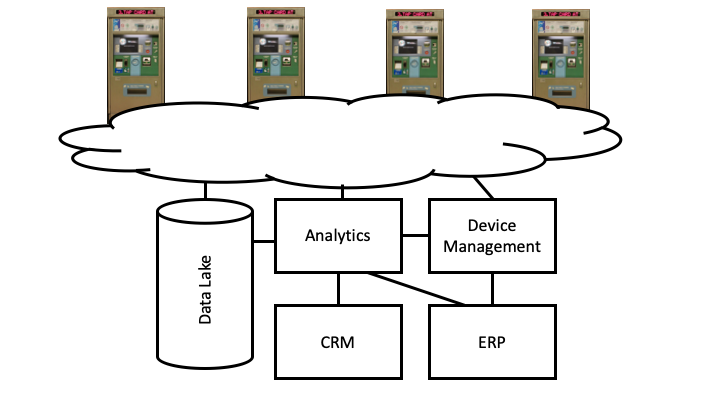Digitization and the importance of IT architecture
Did you already stumble over IT issues while running new digital business models and products? Especially, small to medium enterprises struggle to set up IT structures to realize the full potential of their digital solutions.
Reasons are manifold, for example, technical debts or the neglect of data flows.
Digital products and business models are often based on IT trends like Big Data, Artificial Intelligence or the Internet of Things. Nevertheless, classical systems like CRM, ERP, MES are not less important. More often they are the foundation providing access to central data and workflows.
Let us have a look at the following scenario: The company “Pervasive Automation” builds and sets up ticket vending machines for the public transport sector. Their machines can be found in various areas. Typically, the machines are placed at stops for busses, trams and trains but they can also be found in pedestrian precincts or shopping centers. Basically, everywhere where people might buy tickets. “Pervasive Automation” does not run public transports on their own but acts as a supplier. So far, the company mainly sold the vending machines besides a few contracts for maintenance. During the last months “Pervasive Automation” realized that they might have a unique selling point while providing a service-based business model for their machines. As the machines are already supplied with electricity, connecting the machines to the Internet of Things is just the next, logical step. One main goal of this approach is to monitor the machines remotely and to gather data to improve maintenance. Instead of selling the machines, “Pervasive Automation” would like to ask for a monthly fee and takes over risks and losses of not-working ticket vending machines.
Besides connecting the ticket vendor machines, information from the CRM and ERP systems are required to keep the business model running. The CRM contains information about contact persons while the ERP system provides information about the vending machines’ history, version and production data.

Working on digital products typically addresses more than the product itself. A broader scope is required and further dependencies need to be identified. This is the area of work of IT architects. Currently, there are mainly three main types of architecture roles:
A Software Architect has a focus on software systems and the fundamental, technical decisions which need to be made.
A Solution Architect has also a strong, technical background and focusses on software systems. However, he also has a strategic view aligning business decisions, the influence on software systems and shows ways how software systems can support business decisions.
An Enterprise Architect has a strategic view on the companies’ IT architecture guiding organizations through business, information and technology changes.
However, while the focus is different, the attitude is similar. Architects help to identify risks and missing links, keep the quality up or improve solutions regarding requirements and customer needs. They solve problems and try to define strategies, rules and approaches.
Architecture and the value architects generate during their work can be crucial for digitization. Architecture builds the foundation for new products and business models while architects help to define approaches to come to a fitting architecture.